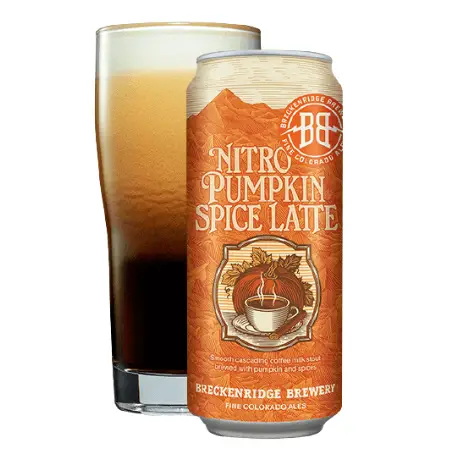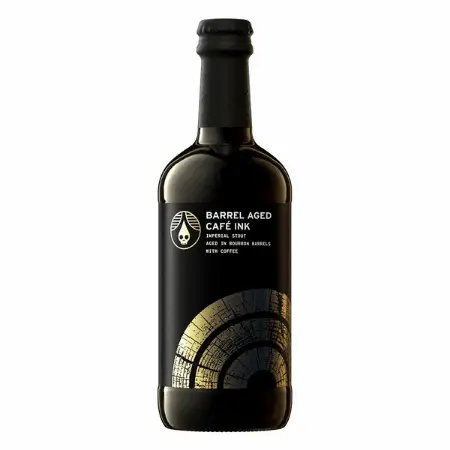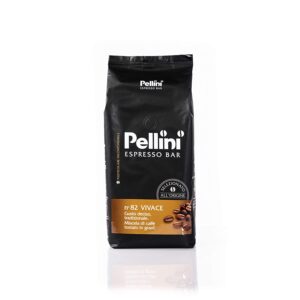Coffee to start the day, beer to end it, right? If you’ve ever considered combining Americans’ two favorite drinks, trust me you’re not alone. Brewmasters across the country have spent the last two decades trying to perfect the recipes for a drink most people are just learning about now.
Coffee beer is made by adding dry coffee grounds into grain during fermentation or by mixing cold-brew coffee directly with beer. Coffee beer often referred to as coffee stout, is mainly just beer with subtle hints of coffee flavor.
Traditionally most craft beers with coffee have been made by paring the bold flavors of java with dark malt beers. More recently several brewers have been experimenting with a bit more creative ways of making their own versions of coffee-beer.
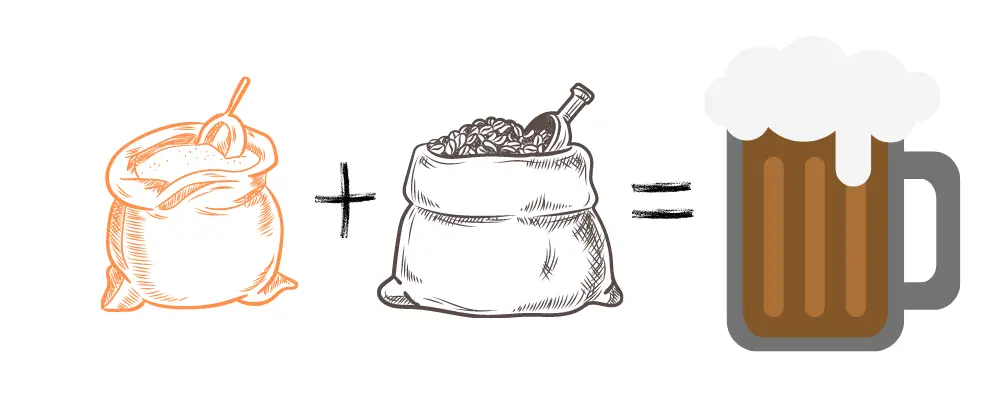
Combining the drinks you like won’t always give you good results, but don’t worry, these two are definitely a match made in heaven! The rich flavor and aroma from the coffee blend perfectly with different beer styles like dark and rich beers in particular. It’s no wonder why you can probably find local coffee shops and craft brewers within shouting distance from each other.
Some of you may ask, does this beverage really contain coffee? or does this beverage really contain beer? The answer is yes, it’s really a mixture of both. Although, the amounts depend on the brewery since everyone has a different brewing method or recipe.
Without a doubt, people all over the world love coffee-infused beer. So it’s no surprise a lot of craft breweries have joined the coffee beer movement and we could not be any happier about it! No wonder this is one of the most popular types of beer out in the market today. Let’s explore all the things you need to know about Coffee Beer.
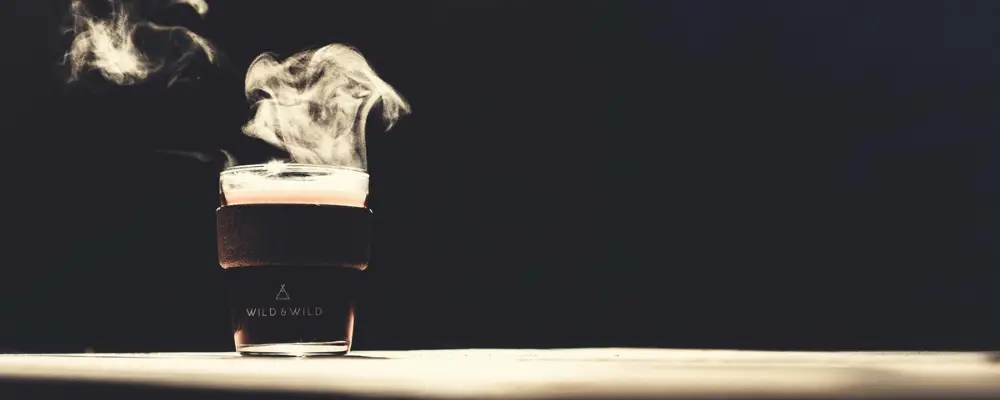
What is Coffee Beer?
Coffee beer has a lot of variations. It’s usually a lager beer or an ale beer combined with coffee to serve an added boost of flavor. There are countless ways to make coffee beer and each brewer often takes their own desired approach.
Some prefer to add dry coffee grounds into the grain while it is undergoing the fermentation process to achieve a more complex infusion of flavors, which sounds delicious, I might add. While others like to add a small cup of cold-brewed coffee to the beer after the fermentation.
This is also known as coffee stout or for some people, craft beer with coffee. But coffee beer sounds a lot easier to remember, right?
Coffee stouts have been dated way back from the 1990s when craft brewing started to popularize. One of the first ones who experimented with this style is the Dogfish Head Brewery. As the craze went on into the 2000s, more brewing companies across the United States started getting into creating their own versions of this drink.
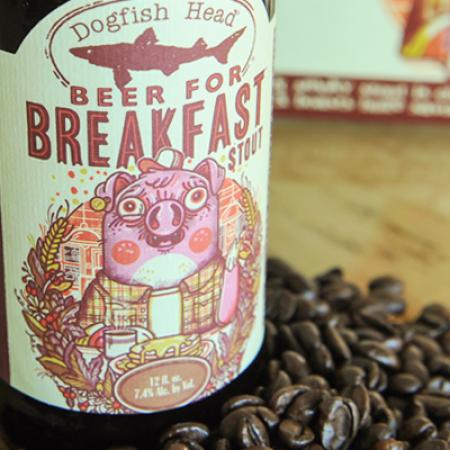
How Is Coffee Stout Made?
Various ways of making a coffee beer have been established by different brewers all around the world. Brewers have their own style and preference when making beverages, and this coffee beer is no exception. There are two ways you can make coffee beer, with coffee or without.
Stouts and porters are mostly brewed using highly toasted malts that provide the flavor and creaminess for the drink. These grains are deeply roasted which is the reason that you get a darker beer with hints of coffee-like flavors. These grains give off a rich roasted aroma and flavor that lends itself to the coffee naturally and can also be roasted even more to help release the essential oils to help produce that tempting taste that we all love.
There are several coffee-flavored beers that depend solely on the roasted malts to produce a slight coffee flavor. The Black Forrest Dark Lager is a great example of a coffee beer that does not actually use any coffee. But let’s be real. We want the real thing!
However, brewing with coffee grounds can pose certain issues like how pronounced the flavor will be. Which would naturally lead to the next question. How much coffee should I add? Well, we all have different preferences on how bold we like our coffee. So, this will mainly depend on how potent you want the coffee flavor to be.
To put it simply, the more coffee you use, the stronger and pronounced the flavors and aromas will be. However, it is extremely important to be careful and watch how much coffee you add to the drink, or else you’ll get an overwhelming brew and result in a five-gallon worth of gross fizzy coffee.
When you use a lesser amount of coffee, this would naturally mean that you will get a subtle flavor but shouldn’t expect many coffee characteristics to come through. But no need to worry about the amount of caffeine in your drink since the amount of coffee added into your beverage is so tiny that you would most likely pass out from the beer before you even drink enough to hit you with that java buzz.
Factors that Affect the Taste of Your Coffee Beer
There are two basic ingredients in making a Coffee Beer. So naturally, beer is a huge factor that will affect how your beverage tastes. The style of beer you use will also make a huge difference. Stouts and porters do very well when paired with coffee, but as do strong-flavored beers as well.
A perfect amount of beer and coffee is needed to create the perfect balance. The deep and rich flavor of coffee pairs beautifully with dark malt beers. The bitter taste of the coffee can actually enhance and accentuate the flavor of the malt.
Although in the past years, several brewers have been getting a little bit more creative and adventurous in making their own versions of the coffee beer.
The 15-long year reign of stout and porter as the base commonly used for coffee beers is over. There are several pairings that surfaced like using brown ale and pale ale as a substitute. Some breweries even tried using the unique and delicious combination of coffee mixed with cream ale.
The type of coffee you use also plays a huge part in the flavors of the result. Using a strong coffee will naturally provide a richer coffee essence while the lighter coffees bring out the more subtle qualities and taste.
Always remember that many dark roast coffees give off a higher oil content that is brought on longer roasting. These oils can be used to add thickness and creaminess to the mouthfeel, but they reduce head retention. You are not forced to use dark roast coffee. Instead, try using different flavors of coffee to add interesting and unique flavors and aromas.
The Brewing Process
But how does beer go from a regular beer to a coffee beer? Well, like mentioned before, there are several ways you can create a coffee beer. But there are usually two ways you can incorporate coffee into a beer.
First is simply adding ground beans right into the beer, either when it is undergoing the process of mashing or fermentation.
The second method involves adding cold brew. Cold-brewed coffee is basically formulated to control the concentration where you can bring the maximum coffee flavor to the beer without the need to dilute it. Once the coffee is ready, a percentage of it is added to the total volume of beer right after the final stage of fermentation is done and just before it is carbonated prior to packaging. This allows the opportunity to blend the additional taste to the beer and ensures that it’s properly done. This method provides a double amount of “coffee-ness”, if there is ever such a word, to help make a beautiful rich flavor and aroma.
Brewers steep out the coffee grounds in a cold liquor or better known as brewing water for approximately 24 to 48. This will allow the brewing water to merge with the flavor of the coffee. After this procedure, the brewing water is then added back into the beer. This can help minimize and lessen excess water, while it is being infused with the coffee flavor to have a smooth and rich result.
You may wonder, does it really have to be a cold-brewed coffee? Why not just use a hot-brewed coffee instead? Well, hot-brewed coffee becomes astringent giving an alcoholic beverage a rubbing alcohol flavor, which is not pleasant to say the very least.
Wherein cold-brewed coffee has a slower process of extraction since it is using cold water for about 24 to 48 hours. This can help create a more concentrated brew, so there is less water that is given the opportunity to interact with the beer. This will brew the coffee with lesser acidity; however, it does not do any great impact or change with regards to the taste and the flavor of the beer as much. Cold-brew also has a smoother nature that can pair well with the strength of the ale.
There are tons of recipes you can review and look up online, but there is basically no right or wrong method to how much coffee should be added or when should you add it in. The best thing you can do is simply figure out what suits your preference and taste.
Whether it may be a pale hoppy beer with a hint of a fruity light roast natural coffee, or a darker beer paired with more sweet chocolate malt, it is all up to you. You will be the one drinking it, after all.
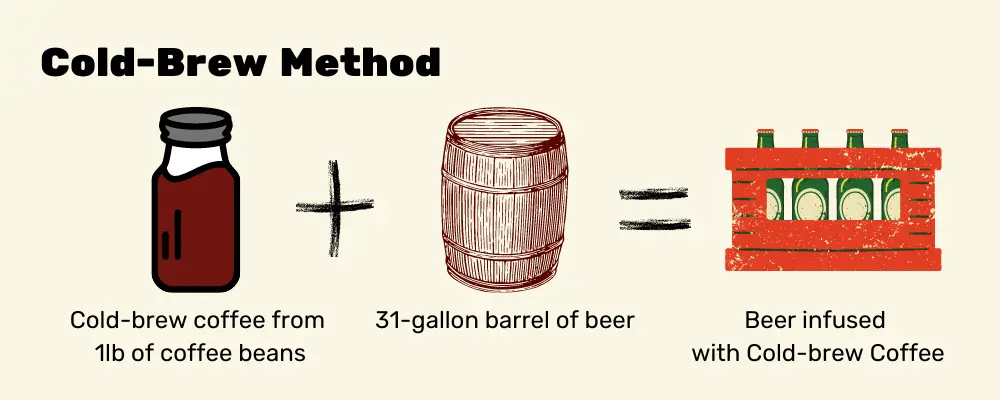
Coffee and Beer
For most people, coffee is usually the drink to start a day and beer is a beverage to end it.
Drinking a cup of joe gets you going and keeps you more alert and awake while a can of beer can help stimulate relaxation in your body. So why are they paired together and combined into a drink?
Well, the relationship between coffee and beer has been established where more and more brewers serve up beers with a little hint of a barista. If there is one thing to be certain about, it’s that people involved in the craft beer and craft coffee industry have one thing in common, passion.
They have an incredible passion for the product they make, and the procedure and ingredients involved when making it.
First things first, brewing beer with coffee is done solely for its taste, and breaking the rules for the sake of achieving incredible tasty beverages is always worth it.
Yes, brewers can definitely achieve wonderful and flavorful combinations using tons of different varieties of hops, malts, and yeast. But to acquire the desired taste of this drink, rules have to be broken.
But why coffee though? The answer is simple because it just makes a lot of sense. Bakers use coffee to help intensify and enrich the flavor of a chocolate cake. Basically, that is what coffee does to the beer. Coffee is an incredibly versatile ingredient. Adding coffee to a beer can help change the flavor, complement, and expand the depth in a way that is hard to achieved (or simply impossible) when using malt alone.
Brewers have done a lot of experimenting to further enhance the variety of coffee beer they can offer. Like how typical beers use a significantly larger number of grains to lend themselves that is very similar to a processed coffee bean, but many brewers are trying to find new alternatives to even break this rule!
Caffeine Content
Yes, craft beer with coffee contains caffeine, but usually only in small amounts. Brewers mostly use a much higher ratio of beer compared to coffee because the beverage is technically labeled as a beer, first and foremost.
If you need the typical ratio, it is usually a 31-gallon barrel of beer added to a cold-brewed coffee extracted from a pound of coffee beans.
This makes sense since the main purpose of mixing these two is to get the hint of an aroma of a coffee while enjoying your beer and not an option to drink when you want a cup of coffee instead.
To simplify it, a glass of coffee beer usually holds caffeine equal to about a sip or two of a brewed coffee. So, strictly speaking, a shot of espresso contains more caffeine than an entire six-pack of coffee beer. It is important to keep in mind that if you are watching your caffeine intake, this drink won’t hurt you, but it is better to ask the brewer just to be safe.
Since the drink has a higher alcohol content than caffeine, it is best to watch how much you drink. This can still potentially make you drunk since it’s basically a beer with a hint of coffee. Control your coffee beer intake and avoid driving if you think you have had too much.
Coffee Stout Worth Tasting
It is best to check out a brewery near you and try out a local coffee beer. The more local, the better, and even more reason you should try.
The good thing about coffee beer is that it is an artisanal drink. It is extremely fun to experiment with something different, made by a brewer that has his own style and ways on how to achieve different flavors and aromas. You can even opt to try this out with food pairings to complete your experience.
Coffee beer pairs well with a wide variety of different foods. Dessert may be a more common and suggested choice, who does not want to enjoy a delicious piece of pecan pie alongside a smooth and refreshing coffee beer? Even a grilled rib-eye steak pairs well with a coffee beer as well. Even an aged-semi hard cheese works well together with this beverage.
If you are lucky enough to have a brewery near you that offers coffee beers, this is a sign that you should check that out! You will not be disappointed.
There are various types of coffee beers as repeatedly mentioned throughout this whole article. So, this may sound tiresome to some of you, but it is greatly important to emphasize that not all coffee beers taste the same.
With how many breweries have joined in producing their own version of coffee beers, there is a big possibility that you have found the coffee beer best suited to your liking. But if you haven’t yet, which is totally understandable, you can conduct experiments to achieve your version of the best coffee beer ever.
There are several coffee and variables that you can base your experiment on. Which are natural versus washed coffee, cold brew versus dry beaning, and same-day roast versus one week after.
No matter how dominant an Indian pale ale is in the craft industry, this is surprisingly not the beverage that every brewery has in common.
At this point, you might have already guessed it. Obviously, it’s coffee! Yes, the morning companion has also turned into the evening’s friend. Slowly making its way into a lot of beer styles from many breweries all around the United States.
Coffee has become such a prominent additional ingredient that it is extremely difficult to find a brewery that hasn’t started incorporating or introducing coffee into the menu and brew.
It has been added to countless ingredients to create a more unique and beautiful rich flavor. The fast rise of the local and craft coffee economy has played a huge part in the coffee’s rise in beer. It is extremely rare to find a brewery that does not offer the infamous coffee beers, YET.
I’ve always seen coffee as a way of bringing people together. Everywhere I go people seem to enjoy a fresh cup of coffee and that’s what drives my passion. There’s always a new brew to master, and there’s always a new face to enjoy it with. Hitch a ride with me on a coffee-fueled adventure to find a perfect cup.

